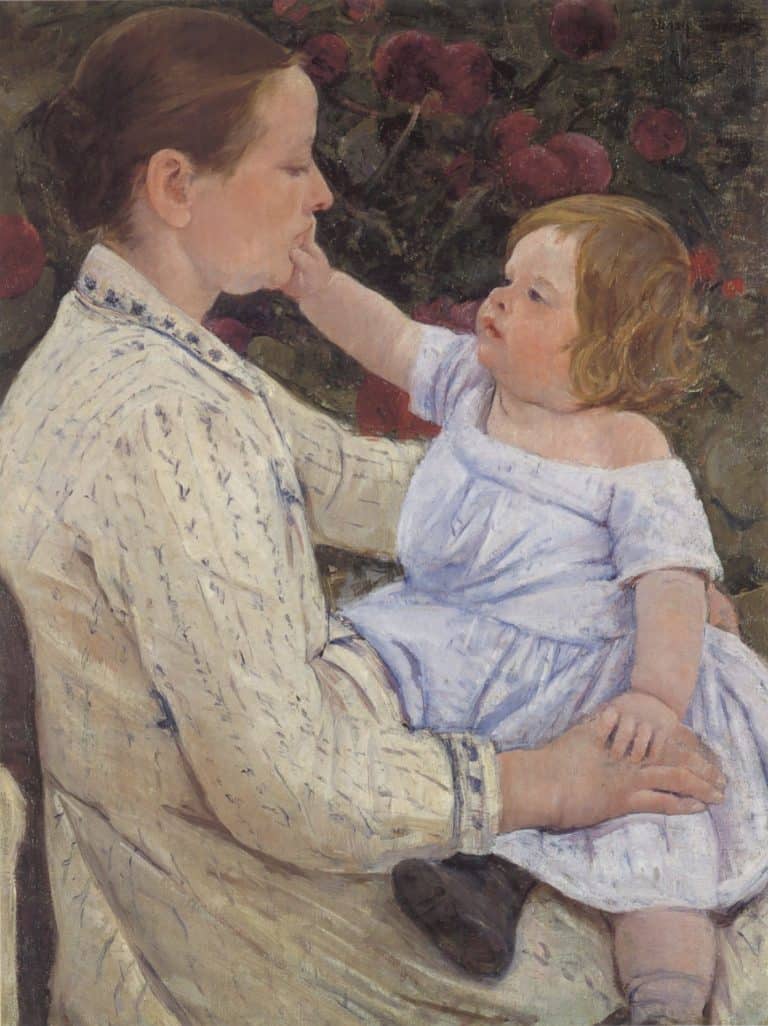What Is Late-Onset OCD
Medically Reviewed By – Juliet Gustafson, LMSW

Late onset OCD, also known as late-onset obsessive-compulsive disorder, is a fascinating phenomenon that sheds light on the complexity of the human mind. While OCD is commonly associated with childhood or adolescence, late onset OCD refers to the development of OCD symptoms in adulthood, typically after the age of 35.
This unique manifestation of OCD presents distinct challenges and considerations for individuals who experience its onset later in life.
Exploring the characteristics, causes, and treatment options for late onset OCD offers valuable insights into the intricate nature of this mental health condition and highlights the importance of understanding and addressing it effectively.
This post is all about Late – Onset OCD.

Ready to reclaim your life, one fearless step at a time? Your personalized path to anxiety-free living starts now!
Unlock your extraordinary future with PanicAway!
Don’t let anxiety define your story. Choose PanicAway, and step into a world bursting with limitless opportunities and unshakable self-assurance. Your personalized path to an extraordinary life is right here!
Meet PanicAway: Your Personal Roadmap to Liberation from Anxiety
Tired of letting anxiety steal the best moments of your life? It’s time to take charge and embrace a world filled with possibilities, free from fear and panic.
Why PanicAway is Your Perfect Ally in this Journey:
- Immediate Relief: Imagine those sleepless nights and crippling panic attacks becoming distant memories. PanicAway arms you with techniques for instant anxiety relief, putting you back in control.
- Empowerment from Within: It’s not about just managing anxiety; it’s about conquering it at its core. Rediscover your inner strength and emerge as a fearless, empowered version of yourself.
- Reclaim Your Freedom: Visualize a life where anxiety no longer dictates your choices. With PanicAway, you’ll savor the freedom to chase your dreams, explore the world, and seize every opportunity with unwavering confidence.
- Proven Success Stories: Join the community of individuals who’ve transformed their lives with PanicAway. You can be the next success story, and we can’t wait to celebrate your triumph!
- Comprehensive Support: You gain access to a treasure trove of resources, from life-changing e-books to enlightening audio guides. Plus, connect with kindred spirits on their own journeys to overcome anxiety.
What Is OCD?
Obsessive-compulsive disorder is a mental health condition that affects approximately 150 million people worldwide. People who have OCD have distressing, unwelcome thoughts, images in their minds, and desires that interfere with their quality of life. Obsessions and compulsions are OCD’s two main components.
Obsessions are troubling thoughts, urges, sensations, and beliefs that occur frequently and cause a great deal of stress. Compulsions, on the other hand, are the behaviors and approaches used in response to obsessions.
These compulsions are carried out in an effort to decrease the unpleasant feelings brought on by obsessions, but sadly, their consequences are just momentary.
What are you waiting for? – Download Your FREE OCD Worksheets Now!
Age Of Onset In OCD
Age of onset in OCD, or obsessive-compulsive disorder, refers to the age at which an individual first experiences symptoms of the disorder. OCD can manifest at any point in a person’s life, but it commonly begins during childhood, adolescence, or early adulthood. Understanding the age of onset in OCD can provide valuable insights into the course of the disorder and help inform diagnosis, treatment, and support strategies.
In many cases, OCD symptoms emerge during childhood or adolescence, with estimates suggesting that around 50% to 80% of individuals with OCD experience symptom onset before the age of 18. Children with OCD often exhibit different symptom presentations compared to adults, with obsessions and compulsions related to contamination, symmetry, hoarding, or the need for reassurance being more prevalent.
According to the largest sample to date, it consists of 138 patients who have OCD. It was reported that the average mean age of onset between the patients was 22. However, subtypes were found to differ significantly.
However, it is important to note that OCD can also have a later onset. Late onset OCD refers to the development of symptoms in adulthood, typically after the age of 35. The causes of late onset OCD are not yet fully understood but may involve a combination of genetic, environmental, and neurological factors.
Late onset OCD can present unique challenges. It may be triggered by significant life events, such as major stressors, traumatic experiences, or hormonal changes. The symptoms and clinical presentation of late onset OCD are generally similar to those observed in early-onset cases, but individuals may have different life circumstances and responsibilities that influence their experience of the disorder.
Regardless of the age of onset, early identification and intervention are crucial for effectively managing OCD symptoms and minimizing their impact on daily life. Seeking professional help from mental health practitioners experienced in OCD is recommended for accurate diagnosis and to develop an appropriate treatment plan.
Understanding the age of onset in OCD provides a foundation for recognizing and addressing the disorder at different stages of life. By being aware of these variations, healthcare providers, individuals, and their support networks can work together to promote early intervention and improved quality of life for those living with OCD.
Need assistance? Visit our Help Page, which is comprised of global professional organizations for mental health.
Age Of OCD Onset In Older Adults
While OCD typically manifests during childhood, adolescence, or early adulthood, it is possible for individuals to experience OCD onset in later stages of life, including older adulthood. While the prevalence of late-onset OCD in older adults is relatively low compared to other age groups, it is important to recognize and address this condition in this population.
The age of OCD onset in older adults can vary, but it is generally defined as the development of OCD symptoms after the age of 35. Late-onset OCD in this age group may have different underlying causes and clinical characteristics compared to early-onset OCD. It can be triggered by various factors such as major life changes, stressors, medical conditions, or neurological changes associated with aging.
Late-onset OCD in older adults may present unique challenges due to the intersection of the disorder with other age-related factors. For instance, individuals may have pre-existing medical conditions or cognitive impairments that can complicate the diagnosis and treatment of OCD. Additionally, older adults may face additional social, emotional, and practical implications when managing OCD symptoms.
Recognizing and diagnosing OCD in older adults can be complex due to overlapping symptoms with other psychiatric or neurological conditions commonly seen in this age group. A thorough assessment by a mental health professional experienced in working with older adults is essential for accurate diagnosis and developing an appropriate treatment plan.
Support from healthcare professionals, family members, and support networks is vital in helping older adults with late-onset OCD navigate the challenges associated with the condition. A comprehensive and individualized approach that addresses the specific needs and circumstances of older adults can contribute to improved outcomes and quality of life.
In summary, while OCD onset in older adults is relatively less common compared to other age groups, it is important to be aware of the possibility of late-onset OCD in this population. Understanding the unique aspects and challenges of late-onset OCD in older adults can guide appropriate diagnosis, treatment, and support strategies to improve their well-being.
Related Article(s) – OCD In Children
What Causes OCD In Older Adults
The exact causes of OCD in older adults, as well as in any age group, are not yet fully understood. However, several factors may contribute to the development of OCD in older adults. These factors can be a combination of genetic, environmental, and neurobiological influences.
Here are some potential causes and contributing factors:
Genetic factors
There is evidence to suggest that OCD has a genetic component, and certain genetic variations may increase the likelihood of developing the disorder. This genetic predisposition can be present throughout a person’s life, including in older adulthood.
Neurobiological factors
OCD has been associated with alterations in brain structure, function, and neurotransmitter systems. Changes in the brain’s circuitry involving areas such as the prefrontal cortex, basal ganglia, and thalamus have been observed in individuals with OCD. These neurobiological factors may also contribute to the development of OCD in older adults.
Life events and stressors
Significant life events or stressors, such as retirement, loss of loved ones, changes in health, or major life transitions, can trigger or exacerbate OCD symptoms in older adults. These events may increase stress levels and disrupt daily routines, potentially impacting mental health.
Cognitive changes
Age-related cognitive changes, such as decline in executive functioning or working memory, may contribute to the onset or exacerbation of OCD symptoms in older adults. These cognitive changes can affect the ability to inhibit obsessions or compulsions effectively.
Comorbid conditions
Older adults may have a higher likelihood of experiencing comorbid conditions alongside OCD, such as depression, anxiety disorders, or neurodegenerative disorders like Parkinson’s disease or dementia. These conditions can interact with and influence the development or expression of OCD symptoms.
It’s important to note that while these factors may contribute to the development of OCD in older adults, each individual’s experience is unique. The exact interplay of these factors and the cause of OCD can vary from person to person.
If an older adult is experiencing OCD symptoms, it is recommended to seek a comprehensive evaluation from a mental health professional experienced in working with older adults. This evaluation can help determine the underlying causes and develop an appropriate treatment plan tailored to their specific needs.
Treatment options may include therapy (such as cognitive-behavioral therapy with exposure and response prevention) and medication, which can be effective in managing OCD symptoms in older adults.
Love Reading? Checkout our MUST READ OCD books List!
What Are The Symptoms Of OCD In Older Adults?
The symptoms of OCD in older adults are generally similar to those experienced by individuals in other age groups. However, it is important to consider the unique circumstances and potential age-related factors that can influence the presentation of OCD symptoms in older adults.
Here are common symptoms of OCD that may be observed in older adults:
Obsessions
Obsessions are intrusive and persistent thoughts, images, or impulses that cause distress or anxiety. In older adults with OCD, common obsessions may include concerns about cleanliness, contamination, safety, symmetry, order, or morality. These obsessions often lead to excessive worry or preoccupation.
Compulsions
Compulsions are repetitive behaviors or mental acts performed in response to obsessions, aimed at reducing anxiety or preventing perceived harm. Older adults with OCD may engage in compulsions such as excessive handwashing, cleaning, checking, arranging items, or seeking reassurance from others. Compulsions can temporarily relieve anxiety but typically provide only short-term relief.
Hoarding
Hoarding behaviors, characterized by the excessive accumulation and difficulty discarding of possessions, can be a prominent symptom of OCD in older adults. Hoarding may lead to cluttered living spaces and difficulty functioning within the home environment.
Doubting and checking
Older adults with OCD may experience excessive doubt and engage in checking behaviors. They may repeatedly check locks, appliances, or other items to ensure they are secure or functioning correctly, even if they have previously confirmed their safety.
Mental rituals
In addition to physical compulsions, older adults with OCD may engage in mental rituals or repetitive mental acts. These rituals can involve silently repeating certain words, phrases, or prayers or engaging in mental counting or ordering to reduce anxiety or prevent harm.
Avoidance behaviors
Some older adults with OCD may develop avoidance behaviors to minimize distress. They may avoid certain places, activities, or situations that trigger their obsessions or cause anxiety.
It’s important to remember that OCD symptoms can vary in severity and presentation from person to person. Additionally, older adults with OCD may also experience age-related factors such as cognitive changes, medical conditions, or medication interactions, which can influence the manifestation of their symptoms.
Related Article(s) – Planning Care For A Patient With OCD
How is OCD diagnosed in Older Adults?
Diagnosing OCD in older adults follows a similar process to diagnosing OCD in other age groups. However, there are certain considerations that mental health professionals take into account when evaluating OCD symptoms in older adults.
The diagnostic process typically involves the following steps:
Initial assessment
The first step is an initial evaluation, where a mental health professional, such as a psychiatrist or psychologist, gathers information about the individual’s symptoms, medical history, and any relevant contextual factors. This may involve conducting a clinical interview with the individual and, if possible, involving a family member or caregiver who can provide additional insights.
Diagnostic criteria
The mental health professional will refer to the Diagnostic and Statistical Manual of Mental Disorders (DSM-5), which outlines the diagnostic criteria for OCD. The individual must meet the specified criteria for obsessions and/or compulsions that cause distress, consume significant time, and interfere with their daily functioning.
Differential diagnosis
It is essential to rule out other possible causes of the individual’s symptoms. This involves differentiating OCD from other mental health conditions that may have similar features, such as anxiety disorders, hoarding disorder, or neurodegenerative disorders like Parkinson’s disease or dementia. The mental health professional may utilize standardized assessments or additional tests to aid in the differential diagnosis.
The mental health professional will take into account age-related factors that can influence the presentation of OCD symptoms in older adults. This may include considering cognitive changes, physical health conditions, medication interactions, or other age-related considerations that could impact the diagnosis and treatment approach.
Collaboration with healthcare providers
Collaboration with other healthcare providers, such as primary care physicians or specialists, may be necessary to gather comprehensive medical information and assess any potential medical conditions that could contribute to or interact with OCD symptoms.
Treatment planning
Once a diagnosis of OCD is confirmed, the mental health professional will work with the individual to develop an appropriate treatment plan. This may involve a combination of therapy, such as cognitive-behavioral therapy (CBT) with exposure and response prevention (ERP), and medication, such as selective serotonin reuptake inhibitors (SSRIs).
The treatment plan should consider the specific needs and circumstances of the older adult, including any age-related factors that may influence treatment choices.
Diagnosing OCD in older adults requires a thorough evaluation by a mental health professional experienced in working with older populations. It is important for the individual and their healthcare team to collaborate to ensure an accurate diagnosis and develop an individualized treatment approach that addresses their unique needs.
How is OCD Treated in Older Adult Populations?
The treatment of OCD in older adult populations typically involves a comprehensive approach that combines psychotherapy and medication management. The specific treatment plan may vary depending on the individual’s needs, preferences, and any age-related factors that may influence treatment choices.
Treating OCD in older adult populations typically involves a combination of psychotherapy, medication, and support strategies. The specific treatment approach may vary depending on the individual’s needs, preferences, and any age-related considerations.
Here are common treatment modalities for OCD in older adults:
Cognitive-behavioral therapy (CBT)
CBT, particularly a specific form called exposure and response prevention (ERP), is considered the first-line psychotherapy treatment for OCD. ERP involves gradually exposing the individual to their feared obsessions or situations while preventing the accompanying compulsive behaviors or rituals. Older adults can benefit from CBT by working with a therapist experienced in treating OCD and tailoring the therapy to their unique circumstances and abilities.
Medication
Selective serotonin reuptake inhibitors (SSRIs) are often prescribed as the first-line medication treatment for OCD. SSRIs help regulate serotonin levels in the brain, which can alleviate symptoms of OCD. Healthcare professionals consider factors such as the individual’s medical history, potential interactions with other medications, and any age-related considerations when prescribing and monitoring medication use.
Supportive interventions
Additional supportive interventions can complement therapy and medication. These may include psychoeducation about OCD, stress reduction techniques, relaxation exercises, and support groups. Such interventions help individuals understand their condition, cope with anxiety and stress, and connect with others facing similar challenges.
Treatment approaches may need to be adapted to accommodate age-related factors in older adults. For instance, therapy sessions may be scheduled at a pace that accommodates potential physical limitations or cognitive changes. Therapists may also work collaboratively with caregivers or family members to provide support and reinforce treatment strategies.
Collaboration with healthcare providers
Treatment for OCD in older adults often involves collaboration among mental health professionals and other healthcare providers, such as primary care physicians or specialists. This collaboration ensures a comprehensive approach to address any medical conditions, potential medication interactions, and overall well-being of the individual.
Long-term management and relapse prevention
OCD is a chronic condition, and ongoing management is essential. Older adults can benefit from regular follow-up appointments with their mental health professional to monitor symptoms, adjust treatment if necessary, and address any challenges that arise. Maintaining a healthy lifestyle, managing stress, and incorporating self-care practices can also support long-term well-being.
It is crucial for older adults with OCD to have a multidisciplinary approach, including the involvement of mental health professionals, healthcare providers, and a supportive network. Individualized treatment plans that consider age-related factors can lead to effective symptom management and improved quality of life for older adults with OCD.
Overall, a comprehensive and individualized treatment plan that incorporates psychotherapy, medication management, and supportive interventions can help older adults effectively manage OCD symptoms and improve their quality of life.
Related Article(s) – Three Evidence-Based Treatments For OCD
The Difference Between Early-Onset OCD and Late-Onset OCD?
When OCD symptoms appear and when it is identified are the only real distinctions between early and late onset OCD. However, early-onset OCD and late-onset OCD have different treatments and symptoms depending on the patient’s development by a specific age and the severity of the condition.
Because adult OCD patients have likely already mastered some coping methods, late-onset OCD symptoms, for example, tend to be less severe than early-onset OCD symptoms.
The symptoms of late-onset OCD often arise suddenly, following a specific trigger or significant life event, in contrast to early-onset OCD, in which symptoms first appear gradually and worsen over time. OCD with a late onset may appear to be a reaction to a stressful or
Early-onset OCD appears to be more prevalent in boys, whereas late-onset OCD is frequently diagnosed in both male and female patients equally. Additionally, it is less likely than late-onset OCD to result in tics, but is more likely to be accompanied by despair and anxiety.
Related Article(s) – Is OCD Treatable Without Medication?

Ready to reclaim your life, one fearless step at a time? Your personalized path to anxiety-free living starts now!
Unlock your extraordinary future with PanicAway!
Don’t let anxiety define your story. Choose PanicAway, and step into a world bursting with limitless opportunities and unshakable self-assurance. Your personalized path to an extraordinary life is right here!
Meet PanicAway: Your Personal Roadmap to Liberation from Anxiety
Tired of letting anxiety steal the best moments of your life? It’s time to take charge and embrace a world filled with possibilities, free from fear and panic.
Why PanicAway is Your Perfect Ally in this Journey:
- Immediate Relief: Imagine those sleepless nights and crippling panic attacks becoming distant memories. PanicAway arms you with techniques for instant anxiety relief, putting you back in control.
- Empowerment from Within: It’s not about just managing anxiety; it’s about conquering it at its core. Rediscover your inner strength and emerge as a fearless, empowered version of yourself.
- Reclaim Your Freedom: Visualize a life where anxiety no longer dictates your choices. With PanicAway, you’ll savor the freedom to chase your dreams, explore the world, and seize every opportunity with unwavering confidence.
- Proven Success Stories: Join the community of individuals who’ve transformed their lives with PanicAway. You can be the next success story, and we can’t wait to celebrate your triumph!
- Comprehensive Support: You gain access to a treasure trove of resources, from life-changing e-books to enlightening audio guides. Plus, connect with kindred spirits on their own journeys to overcome anxiety.
Conclusion
In conclusion, late onset OCD, the development of obsessive-compulsive disorder symptoms in adulthood, presents a unique manifestation of this mental health condition. While OCD commonly emerges during childhood or adolescence, late onset OCD occurs after the age of 35.
The causes of late onset OCD are not fully understood, but they may involve a combination of genetic, environmental, and neurobiological factors. Triggers such as significant life events, stressors, hormonal changes, or neurological conditions can contribute to the onset of symptoms.
Late onset OCD shares similarities with early-onset OCD in terms of symptoms, including obsessions, compulsions, and their impact on daily functioning. However, the experience of late onset OCD can be influenced by the individual’s life circumstances and responsibilities in adulthood. Proper diagnosis by a mental health professional and development of an appropriate treatment plan are crucial for managing symptoms effectively.
Treatment for late onset OCD typically involves a combination of psychotherapy, such as cognitive-behavioral therapy (CBT) with exposure and response prevention (ERP), and medication, such as selective serotonin reuptake inhibitors (SSRIs).
The collaboration between the individual, mental health professionals, and healthcare providers is essential in addressing the unique challenges and considerations of late onset OCD in older adults.
While living with late onset OCD can present challenges, proper treatment and support can significantly improve the individual’s quality of life. Seeking professional help, understanding the nature of OCD, and engaging in effective treatment strategies can empower individuals to manage their symptoms and regain control over their lives.
Continued research and awareness of late onset OCD contribute to a better understanding of this condition and pave the way for improved interventions and support for those affected.
This post answered all your question regarding Late – Onset OCD.


